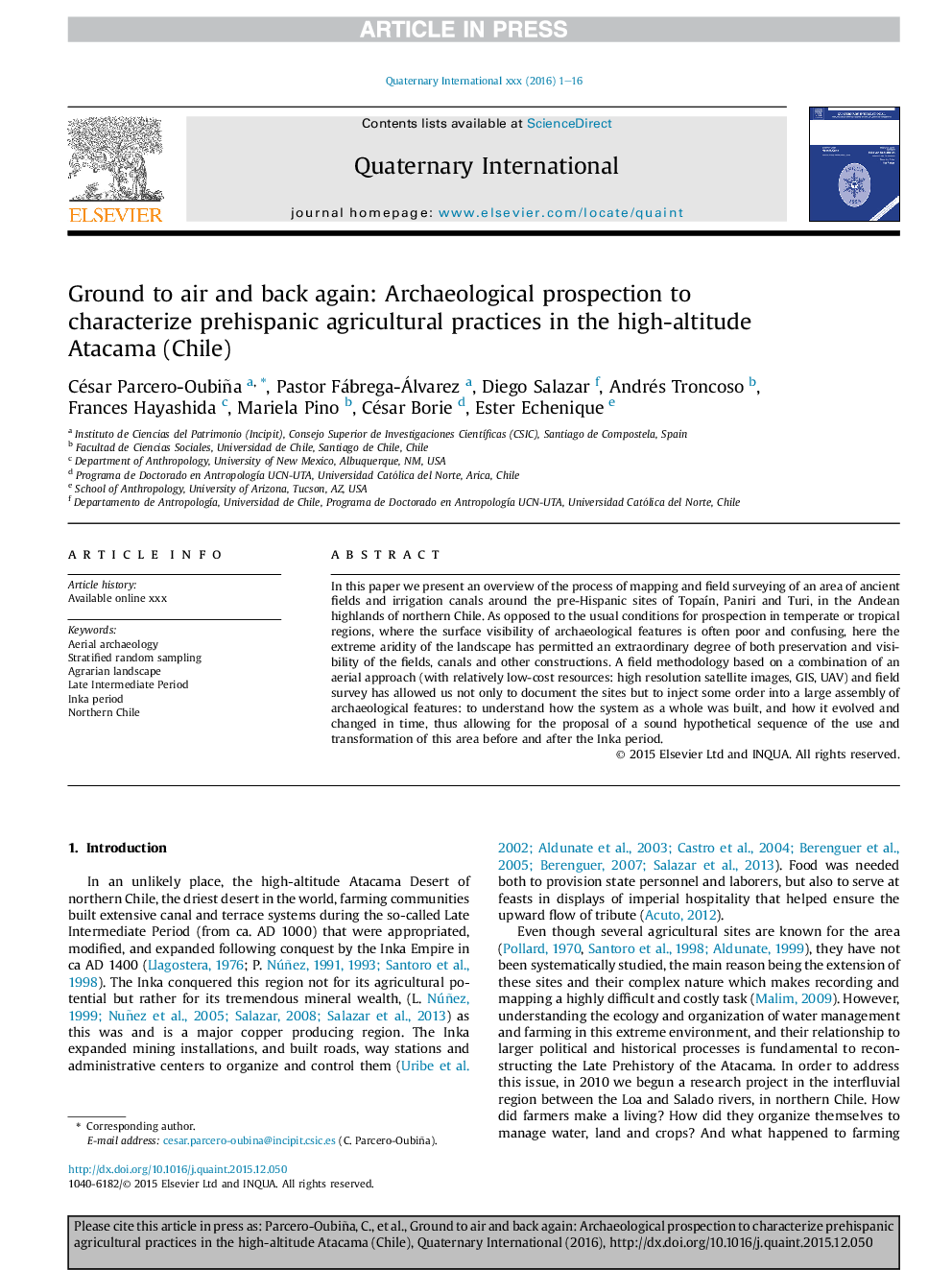| Article ID | Journal | Published Year | Pages | File Type |
|---|---|---|---|---|
| 5113268 | Quaternary International | 2017 | 16 Pages |
Abstract
In this paper we present an overview of the process of mapping and field surveying of an area of ancient fields and irrigation canals around the pre-Hispanic sites of TopaÃn, Paniri and Turi, in the Andean highlands of northern Chile. As opposed to the usual conditions for prospection in temperate or tropical regions, where the surface visibility of archaeological features is often poor and confusing, here the extreme aridity of the landscape has permitted an extraordinary degree of both preservation and visibility of the fields, canals and other constructions. A field methodology based on a combination of an aerial approach (with relatively low-cost resources: high resolution satellite images, GIS, UAV) and field survey has allowed us not only to document the sites but to inject some order into a large assembly of archaeological features: to understand how the system as a whole was built, and how it evolved and changed in time, thus allowing for the proposal of a sound hypothetical sequence of the use and transformation of this area before and after the Inka period.
Keywords
Related Topics
Physical Sciences and Engineering
Earth and Planetary Sciences
Geology
Authors
César Parcero-Oubiña, Pastor Fábrega-Álvarez, Diego Salazar, Andrés Troncoso, Frances Hayashida, Mariela Pino, César Borie, Ester Echenique,
